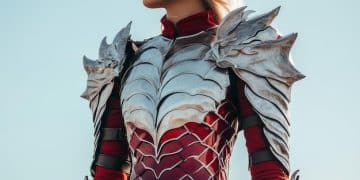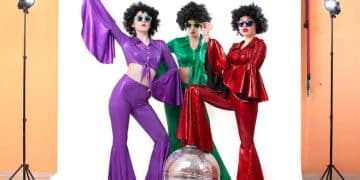Mastering Cosplay: A Comprehensive Guide for Beginners
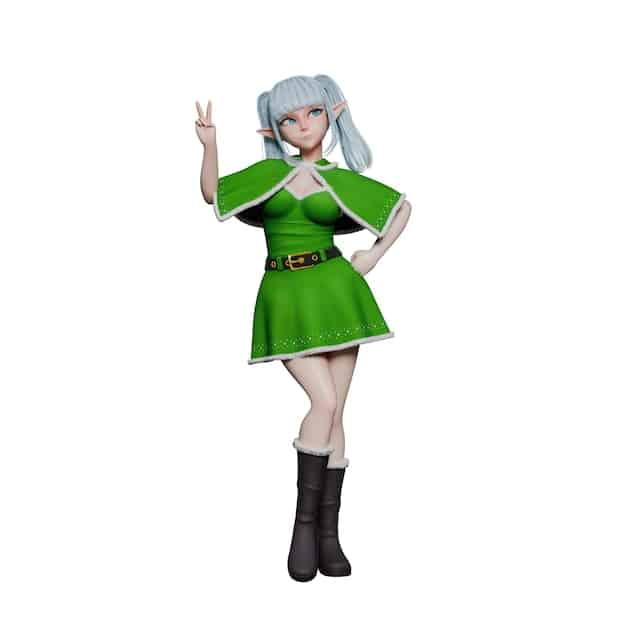
Cosplay, short for costume play, involves dressing up as characters from various forms of fiction. This guide offers a comprehensive overview for beginners, covering essential aspects like character selection, costume creation, makeup, and convention etiquette.
Embarking on the world of cosplay can be an exciting adventure, allowing you to transform into your favorite characters and express your creativity. This guide breaks down the essentials for beginners, ensuring a fun and rewarding experience from start to finish.
What is Cosplay? An Introduction
Cosplay is more than just dressing up; it’s an art form that combines costume design, performance, and a deep appreciation for the characters being portrayed. It’s a hobby enjoyed by people of all ages and backgrounds, creating a community where creativity and self-expression are celebrated.
At its core, cosplay involves creating and wearing costumes that represent characters from various fictional sources. These sources can include:
- Cartoons
- Anime
- Manga
- Video games
- Comics
- Movies
Cosplayers often create their costumes from scratch, using a variety of materials and techniques to bring their chosen character to life. The level of detail and accuracy can vary widely, from simple homemade outfits to elaborate, professionally crafted costumes.
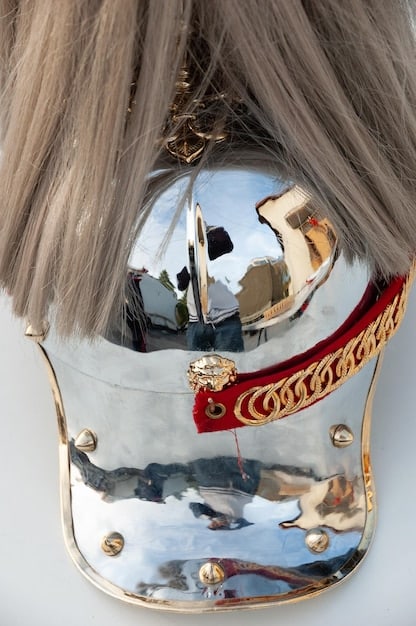
Cosplay is not just about the costume; it is also about embodying the character. This can involve:
Cosplayers often participate in conventions and events where they can showcase their costumes, meet other cosplayers, and compete in costume contests.
In conclusion, cosplay offers a unique and engaging outlet for creativity and self-expression. It’s a vibrant community that celebrates the love of fiction and the art of costume creation.
Getting Started: Choosing Your First Character
Selecting the right character to cosplay is the first step. It should be someone you admire and connect with, but also someone whose costume is within your skill level and budget. A well-chosen character can make your first cosplay experience much more enjoyable.
Factors to Consider when choosing a Character
When selecting a character, several factors can influence your decision and ensure a successful first cosplay experience.
- Personal Connection: Choose a character you genuinely love and feel connected to. This enthusiasm will shine through in your portrayal.
- Skill Level: Assess your current crafting and sewing skills. Starting with a simpler costume can prevent frustration and build confidence.
- Budget: Cosplay can range from affordable to expensive. Consider the cost of materials, wigs, and accessories when choosing a character.
- Body Type: Select a character that you feel comfortable portraying. Cosplay is about having fun and celebrating your love for the character.
Additionally, consider the character’s popularity and the availability of resources. Popular characters often have more tutorials and guides available, making the creation process easier.
Ultimately, choosing the right character sets the stage for a fulfilling and enjoyable cosplay journey. It is about finding a balance between personal passion and practical considerations to create a memorable experience.
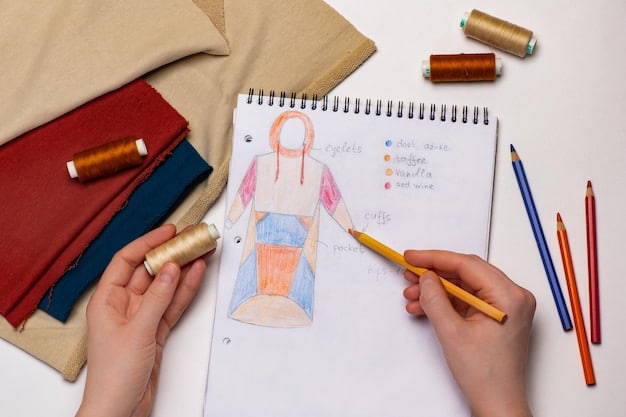
In conclusion, your first character choice should be driven by a combination of personal passion and realistic assessment of your skills and resources. By carefully considering these factors, you can set yourself up for a rewarding and enjoyable cosplay experience.
Essential Materials and Tools for Cosplay
Creating a cosplay costume involves a variety of materials and tools, depending on the complexity of the design. Common materials include fabric, foam, thermoplastics like Worbla, and various adhesives. Essential tools range from sewing machines to cutting tools and painting supplies.
Building an exceptional cosplay requires proficiency in several materials and tools to construct your costume. These include:
Fabric is a foundational element for many costumes. Understanding different types and their properties is essential.
- Cotton: Versatile and easy to work with, ideal for basic garments.
- Polyester: Durable and wrinkle-resistant, suitable for lining and structural elements.
- Spandex: Stretchy and form-fitting, perfect for body suits and tight-fitting costumes.
- Leather/Faux Leather: Adds a realistic and durable touch to armor and accessories.
These techniques bring your designs to life. A sewing machine handles fabric, while EVA foam shapes armor, attached with hot glue. Painting adds color, and weathering creates realism.
In conclusion, having the right materials and tools, along with the knowledge of how to use them, is crucial for successfully designing and creating your cosplay costume.
Basic Sewing Techniques for Beginners
Sewing is a core skill for many cosplayers. Mastering basic sewing techniques like hand-stitching, machine sewing, and pattern making can greatly enhance your ability to create detailed and durable costumes. Start with simple projects to build your confidence and skill.
Key Sewing Techniques for Cosplayers
When starting in cosplay, the most essential sewing skills offer fundamental solutions for costume construction. Learning these skills provides a solid foundation, enabling you to create and modify outfits that bring your favorite characters to life.
- Hand Stitching: A practical method for completing and making final adjustments to complex elements of your cosplay.
- Machine Sewing: For joining fabric parts swiftly and efficiently, it’s best to understand how to install and use a sewing machine.
- Pattern Making: Customizing clothes patterns is crucial for tailoring cosplay outfits that fit your body perfectly.
In summary, mastering basic sewing techniques is vital for cosplay beginners. It provides the skills to craft unique and customized outfits, making your cosplay endeavors more rewarding and authentic.
Working with Foam: Creating Armor and Props
Foam is a popular material for creating armor and props due to its lightweight nature, affordability, and ease of manipulation. EVA foam is particularly favored for its durability and flexibility. Techniques such as cutting, shaping, and sealing foam are essential for achieving professional-looking results.
Tips and Tricks for Foam Crafting
Working with foam lets you create realistic armor and props, giving your costumes a professional and authentic look. From cutting and shaping to surface treatments, there are multiple techniques to explore.
There are several processes to explore when foam crafting.
Cutting foam requires precision and the right tools.
- Sharp Blades: Using utility knives or craft knives for clean cuts on the foam.
- Heat Knife: Heat knives can melt the foam, leaving smoother edges.
Shaping foam is essential for creating curved and detailed designs.
- Heat Gun: A heat gun makes it easy to bend and contour EVA foam to the exact shape you need.
- Sanding: A sanding block or rotary tool may be used to smooth out harsh edges and minor faults.
Whether you’re a beginner or working with EVA foam, these techniques and tricks can significantly improve the look and endurance of your cosplay props and armor.
In conclusion, mastering foam crafting techniques is essential for cosplayers, allowing the creation of realistic and durable armor and props. With the right tools and methods, even beginners can achieve professional-looking results.
Makeup and Wigs: Completing the Look
Makeup and wigs are essential for completing your cosplay look. Makeup can enhance your features and transform your appearance to match the character, while a well-styled wig can perfectly capture the character’s hairstyle. Practice and experimentation are key to mastering these skills.
Selecting and Styling Wigs for Cosplay
Choosing and customizing wigs is a vital ability when creating cosplay. A well-chosen wig may drastically improve how you look and precisely match the character you’re emulating. Here’s how to pick and arrange wigs to get the best results for each cosplay.
A well-styled wig can significantly enhance your appearance.
Choosing the Right Wig Style is very important.
- Character Hairstyle: Choose a wig that closely matches the cosplay character’s hairstyle.
- Fibers that are Heat-Resistant: For styling versatility, choose synthetic wigs that can endure heating tools such as curling irons and straighteners.
Styling Steps ensures your wig looks good.
- Haircut: Prior to styling, trim your wig to the proper length and style.
- Styling Aids: Utilize wig glue, hairspray, and other styling tools to keep everything in place.
Working with wigs takes practice.
In conclusion, selecting and styling cosplay wigs require careful preparation, focus, and practice. You may flawlessly replicate your favorite character’s hairstyle by paying attention to information and using the proper approaches.
Cosplay Etiquette: Conventions and Community Guide
Attending conventions is a significant part of the cosplay experience. It’s important to observe proper etiquette, including respecting personal space, asking for permission before taking photos, and being mindful of your surroundings. Engaging with the community positively enhances the overall experience.
Dos and Don’ts of Cosplay at Conventions
Knowing cosplay etiquette guarantees a pleasant and respectful atmosphere for everybody. Here are some principles to ensure a good time.
- Request before photographing. It is critical to seek authorization from cosplayers before photographing them. Respect their boundaries and be considerate.
- Do not touch. Personal space must always be respected. Keep your hands to yourself and request authorization before touching a cosplayer’s attire or props.
- Be mindful of your surroundings. Some locations may be congested. Be cautious of your surroundings, especially if you’re wearing large props or attire.
In conclusion, being mindful while participating in cosplay etiquette fosters a pleasant and inclusive environment for all participants. These guidelines improve the overall cosplay experience at conventions and beyond.
| Key Aspect | Brief Description |
|---|---|
| 🎭 Choosing a Character | Select a character you love, within your skill level and budget. |
| 🧵 Sewing Techniques | Master basic sewing skills to create detailed and durable costumes. |
| 🛡️ Foam Crafting | Use foam to create realistic armor and props. |
| 📸 Cosplay Etiquette | Respect personal space and ask for permission before taking photos at conventions. |
FAQ About Cosplay
▼
Cosplay, short for costume play, is the art of dressing up as characters from various forms of fiction, such as anime, manga, video games, and movies. It involves creating and wearing costumes and embodying the character through performance and attitude.
▼
When choosing your first character, seek someone you admire, feel connected to, and is doable with your current skills and budget. Simple costumes can minimize frustration and increase confidence. Select a popular character with available guide resources.
▼
The essentials vary by costume, but commonly include fabric, foam (EVA), thermoplastics (Worbla), and adhesives. Fundamental tools range from sewing machines and cutting tools to heat guns and painting supplies. Knowing how to use them is what makes them essential.
▼
Start with basic techniques like contouring and highlighting. Experiment with different products & use online tutorials for certain character looks. Applying good makeup will require practice, perseverance, and patience.
▼
Always ask for permission before taking photos, respect personal space, and be aware of crowded areas. Do not touch the cosplayer without their consent. Ensure you are mindful of others and maintain a respectful atmosphere.
Conclusion
Embarking on your first cosplay journey can be an incredibly rewarding experience. By carefully selecting your character, mastering essential crafting techniques, and observing proper etiquette, you’ll not only create stunning costumes but also become part of a vibrant and welcoming community. So, embrace your creativity, unleash your inner hero, and dive into the captivating world of cosplay!


